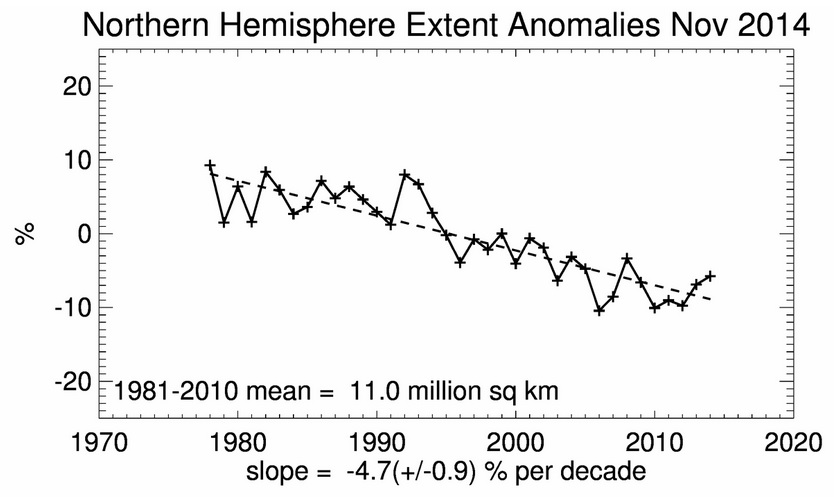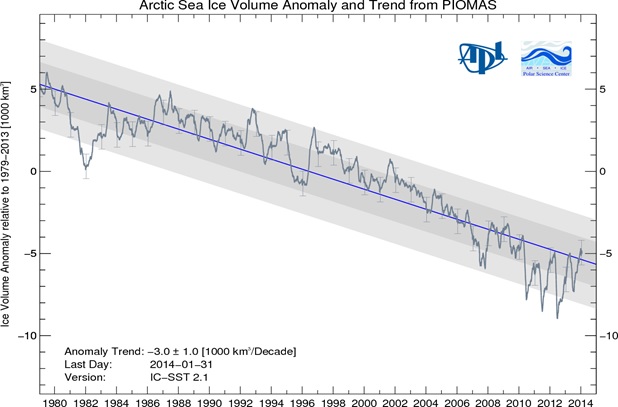Scientists' Explanation for Investigation 3
Arctic Sea Ice Melting
Scientists are discovering a rapid and continuing decline of extent of Arctic sea ice, with a record minimum in 2012 of 3.6 million km2 (1.39 million miles2).In this investigation you compared sea ice extent for both the end-of-winter and end-of-summer from 1983 to 2013. Scientists have calculated that the surface area of the winter and summer Arctic Sea Ice declined by 2.7% and 10%, respectively, per decade from 1978. You should have calculated a similar decrease in ice extent for 1983 to 2013 period for the end-of winter sea ice extent and the end-of-summer sea ice extent.
The IPCC’s latest assessment (AR5) reports a downward trend of 3.8% per decade in the annual average extent of sea ice in the Arctic from 1979 through 2012. The late summer sea ice extent has decreased even more, by between 9.4 to 13.6 percent per decade, and the eight lowest sea ice extents since 1979 have occurred in the last eight years (2007-2014). This rate of melting is faster than predicted by the climate models.
Annual ice may be approximately 1 meter (3.3 feet) thick in the winter, while multiyear ice survives summer melt and can be 5 to 7 meters (16.4 – 23 feet) thick. Observations of the thickness or volume of sea ice have been more limited. However, the European Space Agency (ESA) CryoSat satellite was launched in October 2010 and has enabled scientists to estimate sea ice thickness and volume for the last three years. While this data is suggesting thicker ice in 2013 than 2012, it is important to analyze the longer-term trend. The NSIDC estimated that ice volume in October 2013 still ranks among the lowest of the past 30 years.
The following video is based on the Arctic Report Card: Update for 2013 . To learn more and keep up with current news in the Arctic, see http://www.arctic.noaa.gov/reportcard/ and http://nsidc.org/arcticseaicenews/.
Video Source: NOAA


